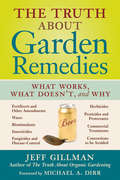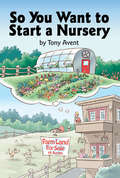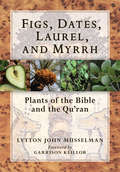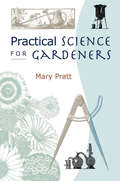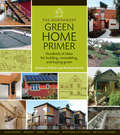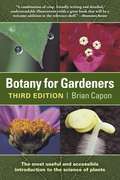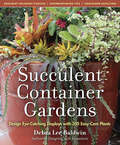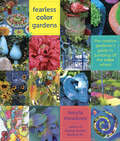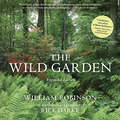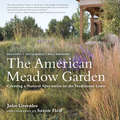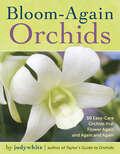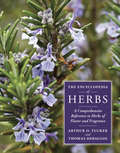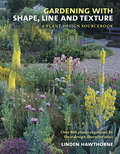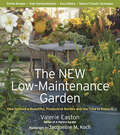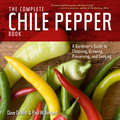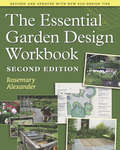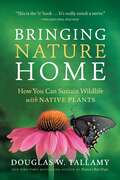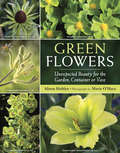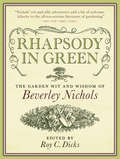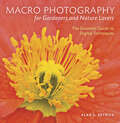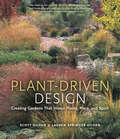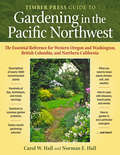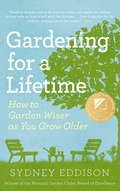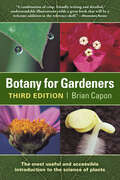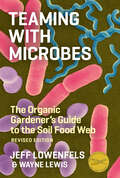- Table View
- List View
The Truth About Garden Remedies: What Works, What Doesn't & Why
by Jeff GillmanCan beer make plants grow? How about buttermilk? Or music—classical or rock? Are you sure about planting trees in deep holes? And how about chasing insects with hot sauce and stopping slugs with eggshells? Whether in ancient books, on television, or in gardening publications, remedies for all your garden woes are here for the taking: the challenge is to know what will work and what won't. Fearlessly conducting original experiments and harvesting wisdom from the scientific literature, horticulturalist Jeff Gillman assesses new and historic advice and reveals the how and why‚ and sometimes the why not‚ for more than 100 common and uncommon gardening practices. The results will surprise even experienced gardeners.
So You Want to Start a Nursery
by Tony AventWhen Avent announced that he was quitting his job to build a specialty nursery, his former horticulture professor begged his student to reconsider, telling him he couldn't possibly make a profit "without doing something illegal." More than ten years and 20 nursery catalogs later, Avent owns a thriving national business with nearly 30 employees. He wrote So You Want to Start a Nursery to debunk myths about the ornamental-plants nursery business and what it takes to succeed, whether you're a backyard hobbyist or a wholesale grower. (And he still has a clean arrest record.) Assuming that the reader has some basic knowledge about how plants are grown, Avent focuses on the business and planning concerns of the nursery owner. While recounting humorous stories of his baptism by fire as a beginning nurseryman, Avent also provides a primer on the nursery industry as a whole, with discussions of the merits and disadvantages of retail, wholesale, mail-order, and liner operations, to name just a few. Readers of this book will obtain the tools they need to make a business plan of their own. This book is a must-read for horticulture students, industry insiders, and advanced gardeners who dream of turning their passion for plants into a job they love.
Figs, Dates, Laurel, and Myrrh: Plants of the Bible and the Quran
by Lytton John Musselman Garrison KeillorThis book celebrates the plants of the Old Testament and New Testament, including the Apocrypha, and of the Quran. From acacia, the wood of the tabernacle, to wormwood, whose bitter leaves cured intestinal worms, 81 fascinating chapters—covering every plant that has a true botanical counterpart—tell the stories of the fruits and grains, grasses and trees, flowers and fragrances of ancient lore. The descriptions include the plants' botanical characteristics, habitat, uses, and literary context. With evocative quotations and revelatory interpretations, this information is all the more critical today as the traditional agrarian societies that knew the plants intimately become urbanized.The unusually broad geographic range of this volume extends beyond Israel to encompass the Holy Land's biblical neighbors from southern Turkey to central Sudan and from Cyprus to the Iraq border.Richly illustrated with extensive color photography and with a foreword by the incomparable Garrison Keillor, this delightful ecumenical botany offers the welcome tonic of a deep look into an enduring, shared natural heritage.
Practical Science for Gardeners
by Mary PrattInformative and entertaining, this book will stimulate experimentation and encourage gardeners to review and improve their current gardening practices. Once gardeners learn how plants are constructed, it is easier to envision how they'll grow and flourish. An understanding of the structure behind good, healthy soil gives clues as to how to improve one's own garden tilth. This practical guide helps readers identify what plants need to survive and how these fundamental scientific facts are at the heart of good plant care. A chapter on seeds and germination will encourage gardeners at any level to try their hand at propagation, while discussion of soil, pests, and diseases adds to the skills of all gardeners. The final sections of the book take a closer look at biodiversity, ecology, genetic engineering, and nomenclature. For the enthusiastic beginner or the master gardener, Practical Science for Gardeners unravels the mysterious inner life of plants.
The Northwest Green Home Primer
by Kathleen Smith Kathleen O'BrienThe essential, real-world, green home manual Everyone can make green home decisions on a budget with this inspiring, informationpacked guide. Whether you are building, remodeling, buying, or just curious, here are real-world strategies for getting the greenest results from your budget, with hundreds of ideas for a home that is built to last, comfortable and healthy, money- and time-saving in the long term, and kind to the planet. From your home's exterior to its operating systems within, from siting to interior design, this is the basic training that has given many the confidence to proceed. Award-winning sustainable design and building consultant and teacher Kathleen O'Brien and architectural designer and sustainability consultant Kathleen Smith offer their "top picks" for each phase. They've also each faced their own green home challenges in a single-family house and a duplex, and other case studies show affordable energy-efficient green homes both old and new. Brimming with ideas, clear and logical, with tips, checklists, and resources for green home planning, construction, remodeling, and maintenance, extensively illustrated with photos and diagrams, this is the essential green home manual for novice and professional alike.
Botany for Gardeners (3rd edition)
by Brian CaponNew to the 3d edition of this well-illustrated text are four brief essays on human's relation to food, the possible impact of global warming on food supply, genetic modification of food, and the remarkable details to be seen with a scanning electron microscope. Other new additions are inset boxes expanding on the text with interesting facts and details, and additional photos. The volume, which is based on Capon's botany course for non-science majors (he is emeritus at California State U., Los Angeles) is an outstanding and enjoyable introduction to botany, whether the reader is a gardener, or just a garden visitor. Annotation ©2010 Book News, Inc., Portland, OR (booknews.com)
Succulent Container Gardens: Design Eye-Catching Displays with 350 Easy-Care Plants
by Debra Lee BaldwinDefine your individual style. With their colorful leaves, sculptural shapes, and simple care, succulents are beautiful yet forgiving plants for pots. If grown in containers, these dry-climate jewels—which include but are not limited to cacti—can be brought indoors in winter and so can thrive anywhere in the world. In this inspiring compendium, the popular author of Designing with Succulents provides everything beginners and experienced gardeners need to know to create stunning container displays of exceptionally waterwise plants. The extensive palette includes delicate sedums, frilly echeverias, cascading senecios, edgy agaves, and fat-trunked beaucarneas, to name just a few. Easy-to-follow, expert tips explain soil mixes, overwintering, propagation, and more.
Fearless Color Gardens: The Creative Gardener's Guide to Jumping Off the Color Wheel
by Keeyla MeadowsRenowned garden artist Keeyla Meadows sees the world in strong, saturated shades. Fearless Color Gardens brings this unique vision to life by showing how to use wild, uninhibited color to connect indoor and outdoor spaces and turn a garden into a work of art.Learn how to pick colors that work together; how to coordinate the colors of walls, benches, containers, and garden art; how to organize garden spaces through the use of color; and how to translate personal color preferences into tangible form in the garden. Fearless Color Gardens also features a new way of looking at color with "Keeyla's Color Triangle"; easy-to use tips on growing edibles in color themed gardens; and Keeyla's favorite plants for specific colors.In the end, readers will want to reinvent the staid rules of the color wheel and turn their color preferences into intoxicatingly vibrant garden expressions.
The Wild Garden: Expanded Edition
by William Robinson Rick DarkeFirst published in 1870, The Wild Garden challenged the prevailing garden style of the day and advocated a naturalistic style, in which hardy plants, both native and exotic, are arranged in groupings that mimic wild landscapes. Thanks to Robinson’s passionate advocacy, the naturalistic style triumphed, and Robinson's urgent message continues to resonate today. For this newly designed edition, Rick Darke has written an introductory essay that not only underscores Robinson’s importance in the evolution of garden design and ecology, but also explains his relevance for today’s gardeners, designers, and landscape professionals. The book contains over 100 stunning photographs taken by Darke, including images of Gravetye and of modern “wild” gardens.
The American Meadow Garden: Creating a Natural Alternative to the Traditional Lawn
by John Greenlee Saxon HoltIf there's one lesson every homeowner must learn, it's this: The traditional lawn is a huge, time consuming, synthetic-chemical sucking mistake. The time has come to look for new ways to create friendly, livable spaces around our homes. In The American Meadow Garden, ornamental grass expert John Greenlee creates a new model for homeowners and gardeners. For Greenlee, a meadow isn't a random assortment of messy, anonymous grasses. Rather, it is a shimmering mini-ecosystem, in which regionally appropriate grasses combine with colorful perennials to form a rich tapestry that is friendly to all life — with minimal input of water, time, and other scarce resources. Kids and pets can play in complete safety, and birds and butterflies flock there. A prairie style planting is a place you want to be. With decades of experience as a nurseryman and designer, John Greenlee is the perfect guide. He details all the practicalities of site preparation, plant selection, and maintenance; particularly valuable are his explanations of how ornamental grasses perform in different climates and areas. Gorgeous photography by Saxon Holt visually illustrates the message with stunning examples of meadow gardens from across the country. We've reached a stage where we can no longer follow past practices unthinkingly, particularly when those practices are wasteful and harmful to the environment. It's time to get rid of the old-fashioned lawn and embrace a sane and healthy future: the American meadow garden.
Bloom-Again Orchids: 50 Easy-Care Orchids that Flower Again and Again and Again
by JudywhiteOrchids have a reputation as the divas of the plant world: fussy, difficult-to-grow plants that—on top of all that—are prohibitively expensive. But there are plenty of orchids that anyone can grow. Orchids are no more difficult than familiar houseplants such as the African violet, and can be made to thrive and bloom in average indoor conditions. You just need to know what makes them happy.Bloom-Again Orchids highlights the easiest, most fuss free varieties and includes invaluable tips on where to buy orchids and how to keep them in bloom. Each of the fifty profiles focuses on a commonly available orchid variety and includes a description, photograph, chart of basic growing requirements, and a handy twelve-point checklist.
The Encyclopedia of Herbs: A Comprehensive Reference to Herbs of Flavor and Fragrance
by Thomas DeBaggio Arthur O. TuckerThis meticulously researched compendium provides every aspect of growing, identifying, harvesting, preserving, and using more than 500 species of herbs. Thorough profiles provide a plant's botanical name and family, whether it is an annual or perennial, its height, hardiness, light requirements, water consumption, required soil type, and pH. The often fascinating history of the plant, the chemistry of its essential oils, and its culinary, landscape, and craft uses are also included, as is advice on how to propagate. For the first edition of their work, both authors received The Gertrude B. Foster Award for Excellence in Herbal Literature from the Herb Society of America. This new edition adds important species and includes updated nomenclature.
Gardening with Shape, Line and Texture: A Plant Design Sourcebook
by Linden HawthorneGardening with Shape, Line and Texture bridges the gap between garden design books and plant reference encyclopedias. Leading landscaper Linden Hawthorne looks at plants from a designer's perspective (where color is often a secondary consideration) and emphasizes the important roles of plant shape. Part One reviews fine art principles and shows how they can be successfully applied to plant compositions by grouping plants into three heights: ground to knee, knee to navel, and navel to crown. She identifies different plant shapes—buns, mounds, tiers, fountains, uprights—and shows how the use of them contributes to the success of the finished design. Part Two is a plant sourcebook with plants listed alphabetically within their key plant shape categories. This innovative plant reference delivers plant information in a form that neatly dovetails with the garden design process and will inspire gardeners to look beyond color and begin to appreciate the whole plant.
The New Low-Maintenance Garden: How to Have a Beautiful, Productive Garden and the Time to Enjoy It
by Valerie Easton Jacqueline Knox Jacqueline M. KochDo you ever lament that you'd love to be able to garden more, but just don't have the time? The demanding pace of modern life leaves little space for the pleasures of gardening. On the other hand, gardening itself could be the culprit: elaborate, traditional perennial borders; water-hungry or disease-prone plants; needy lawns; and high-maintenance plants that require staking or clipping all suck up precious hours. Simply put, we need to start gardening in a whole new way. In this inspiring book, Val Easton shows exactly how to have a low-maintenance garden that doesn't sacrifice style. You won't have to give up your favorite plants or settle for expanses of ugly bark nuggets. You just have to unlearn some bad old habits and pick up some good new ones. So, how do you go about making a "new" low-maintenance garden? First, design your garden with maintenance in mind—good-looking hardscape will both save weeding time and showcase your favorite plants. Second, simplify your garden routines—learn the most efficient planting and maintenance techniques and don't get stressed if everything isn't letter-perfect. Third, learn how to work with nature rather than against it. And finally, embrace home-grown fruits, herbs, and vegetables; well planted containers; and thoughtfully chosen plants.The New Low-Maintenance Garden doesn't just tell you how to garden in a whole new way—it shows you, through profiles and beautiful photographs of real gardens that embody low-maintenance techniques. The pressures of life are not likely to ease up anytime soon, but the lessons of this timely book will help you banish guilt over undone garden chores and revel in your garden successes.
The Complete Chile Pepper Book: A Gardener's Guide to Choosing, Growing, Preserving, and Cooking
by Dave DeWitt Paul W. BoslandThe Complete Chile Pepper Book, by world-renowned chile experts Dave DeWitt and Paul W. Bosland, shares detailed profiles of the one hundred most popular chile varieties and include information on how to grow and cultivate them successfully, along with tips on planning, garden design, growing in containers, dealing with pests and disease, and breeding and hybridizing. Techniques for processing and preserving include canning, pickling, drying, and smoking. Eighty-five mouth-watering recipes show how to use the characteristic heat of chile peppers in beverages, sauces, appetizers, salads, soups, entrees, and desserts.
The Essential Garden Design Workbook: Third Edition
by Rosemary AlexanderThe Essential Garden Design Workbook guides the reader through every stage of planning a garden — how to survey a site, how to choose landscaping materials, and how to develop planting schemes. This fully revised and updated second edition features new U.S. case studies and new photographs. Valuable tips on green gardening are new to this edition, and include how to harvest rainwater, how to design a green roof, tips on sustainable planting, and a guide to composting. Tailor-made for hands-on gardeners, the workbook approach is accessible, practical, and can be used to create a garden from scratch and to redesign an existing garden. Gardeners will find easy ways to measure large spaces, estimate the height of a tree, and find the right proportions for a deck. They'll also find tips on space, light, and color. Includes hundreds of easy-to-follow line drawings and diagrams.
Bringing Nature Home: How You Can Sustain Wildlife with Native Plants, Updated and Expanded
by Douglas W. Tallamy Rick Darke“If you cut down the goldenrod, the wild black cherry, the milkweed and other natives, you eliminate the larvae, and starve the birds. This simple revelation about the food web—and it is an intricate web, not a chain—is the driving force in Bringing Nature Home.” —The New York Times As development and subsequent habitat destruction accelerate, there are increasing pressures on wildlife populations. But there is an important and simple step toward reversing this alarming trend: Everyone with access to a patch of earth can make a significant contribution toward sustaining biodiversity. There is an unbreakable link between native plant species and native wildlife—native insects cannot, or will not, eat alien plants. When native plants disappear, the insects disappear, impoverishing the food source for birds and other animals. In many parts of the world, habitat destruction has been so extensive that local wildlife is in crisis and may be headed toward extinction.Bringing Nature Home has sparked a national conversation about the link between healthy local ecosystems and human well-being, and the new paperback edition—with an expanded resource section and updated photos—will help broaden the movement. By acting on Douglas Tallamy's practical recommendations, everyone can make a difference.
Green Flowers: Unexpected Beauty for the Garden, Container or Vase
by Alison Hoblyn Marie O'HaraGreen in the garden is at once the most common color of foliage and the rarest color found in flowers. Whether you're a home gardener looking for a jolt of freshness or a floral designer seeking inspiration, this charming collection of unexpected plants provides a palette of flowering greens for year-round display. Combining Marie O'Hara's sumptuous photography and Alison Hoblyn's evocative text, Green Flowers explores the history, botany, care, and cultivation of green-flowered plants. The hand-picked selection includes trees, grasses, vines and climbers, annuals, perennials, bulbs, wildflowers, exotics, orchids, edible plants, and water garden plants. The appeal of the selection is broad: Jack-in-the-pulpit provides curiosity; fritillaries and columbines lend quiet beauty; and green roses, hellebores, and irises are an excellent foil to their more colorful companions. Eighty-four plants are included in all. Complete tips on growing and arranging the plants are given for each entry, as well as an account of the interesting myths, history, and lore.
Rhapsody in Green: The Garden Wit and Wisdom of Beverley Nichols
by Beverley Nichols Roy C. DicksBeverley Nichols (1898–1983) was a prolific author, playwright, composer, and media personality. Though much of his work has been forgotten, his garden writing has stood the test of time. His amusing anecdotes, poetic contemplations, and penetrating observations speak to all gardeners—from houseplant killers to nursery professionals—and capture the joy, heartache, and hilarity of gardening.Rhapsody in Green speaks to the true spirit of Beverley Nichols. Compiled by Roy C. Dicks and drawn from fifteen of his best titles, these carefully selected passages offer a tantalizing taste of Nichols's humor, passion, and poetry. Designed for easy browsing and casual reference, it is organized by subject, including favorite plants, despised plants, and the secrets to successful gardening. Readers will also delight in William McLaren's original line drawings spread throughout the text. A must-have for Nichols fans, gardeners, and plant lovers.
Macro Photography for Gardeners and Nature Lovers: The Essential Guide to Digital Techniques
by Alan L. DetrickGardeners and nature lovers delight in taking pictures—especially close-ups of flowers, butterflies, and insects. And though advances in digital camera technology have made taking, storing, and sharing photos easier than ever, taking top-quality pictures requires familiarity with both digital technology and the general principles of photography. Macro Photography for Gardeners and Nature Lovers provides exactly the information that aspiring photographers—no matter their level of skill—need to take their photos to the next level. Clear and concise chapters cover the basics of macro (close-up) photography, explain the features of current digital single-lens reflex cameras, show the many ways images can be composed, and share tips on digital effects, storage, and manipulation of imagery. Throughout the text, helpful tips, definitions, exercises, and case studies serve to demystify digital photography. Each lesson is supported by examples of the author's stunning photography. Whether taking photos of flowers and insects, compiling a photographic record of your garden, or simply sharing beautiful images with friends and family, everyone can become accomplished photographers of the world's small-scale wonders.
Plant-Driven Design: Creating Gardens That Honor Plants, Place, and Spirit
by Scott Ogden Lauren Springer OgdenFor too long, garden design has given pride of place to architecture, artifice, and arbitrary principles. The results? Soulless landscapes where plants play subordinate roles.With passion and eloquence, Scott Ogden and Lauren Springer Ogden argue that only when plants are given the respect they deserve does a garden become emotionally resonant. Plant-Driven Design shows designers how to work more confidently with plants, and gives gardeners more confidence to design. The Ogdens boldly challenge design orthodoxy and current trends by examining how to marry plantsmanship and design without sacrificing one to the other.Supported by extensive lists of plants adapted to specific purposes and sites, Plant-Driven Design explores how plants interact with place. In addition, the authors' experience gardening and designing in a wide variety of climates gives their perspective a unique depth. In ideas, scope, and detail, this book both embraces and transcends regionality. By reclaiming gardens as a home to plants, this groundbreaking work will restore life-affirming vitality to garden design and profoundly affect how we understand and experience gardens.
The Timber Press Guide to Gardening in the Pacific Northwest: The Essential Reference For Western Oregon And Washington, British Columbia, And Northern California
by Carol W. Hall Norman E. HallTired of being lumped into the unwieldy category of a western garden? Frustrated by the lack of reliable, practical information about gardening in the Pacific Northwest? No longer! The Timber Press Guide to Gardening in the Pacific Northwest presents all the information a gardener—whether novice or expert—needs to keep their garden beautiful and thriving. With a combined 100 years of gardening experience in the Pacific Northwest, the authors clearly explain the unique challenges and joys of gardening in the region. By dividing the Pacific Northwest into seven subregions, they help readers to better understand the climatic and geographical factors that shape their gardens. This complete guide includes extensive profiles of plants that are ideally suited to the region, including perennials, ornamental grasses, bulbs, groundcovers, roses, shrubs, trees, and climbers. The month-by-month gardening calendar describes what weather patterns to expect, what's in bloom, and what garden tasks are best done in that month. With additional chapters detailing the most common gardening problems and recommendations for effective, nontoxic ways of dealing with them, this book is nothing short of essential.
Gardening for a Lifetime: How to Garden Wiser as You Grow Older
by Sydney EddisonFrom the winner of the National Garden Club's Award of Excellence Although the garden may beckon as strongly as ever, the tasks involved—pulling weeds, pushing wheelbarrows, digging holes, moving heavy pots—become increasingly difficult, or even impossible, with advancing age. But the idea of giving it up is unthinkable for most gardeners. So what’s the alternative? In Gardening for a Lifetime, Sydney Eddison draws on her own forty years of gardening to provide a practical and encouraging roadmap for scaling back while keeping up with the gardening activities that each gardener loves most. Like replacing demanding plants like delphiniums with sturdy, relatively carefree perennials like sedums, rudbeckias, and daylilies. Or taking the leap and hiring help—another pair of hands, even for a few hours a week, goes a long way toward getting a big job done. This new edition features an additional chapter describing how Sydney’s struggles with hip and back problems forced her to walk the walk. As a friend of hers says, “Last summer you wrote the book. Now, I’m happy to see that you’ve read it.” Gentle, personable, and practical, Gardening for a Lifetime will be welcomed by all gardeners looking to transform gardening from a list of daunting chores into the gratifying, joyful activity it was meant to be.
Botany for Gardeners: Third Edition (Science For Gardeners Ser.)
by Brian CaponA bestseller since its debut in 1990, this indispensable and handy reference has now been expanded and updated to include an appendix on plant taxonomy and a comprehensive index. Two dozen new photos and illustrations make this new edition even richer with information. Its convenient paperback format makes it easy to carry and access, whether you are in or out of the garden. An essential overview of the science behind plants for beginning and advanced gardeners alike.
Teaming with Microbes: The Organic Gardener's Guide to the Soil Food Web, Revised Edition (Science for Gardeners)
by Wayne Lewis Jeff LowenfelsHealthy soil teems with life—not just earthworms and insects, but a staggering multitude of bacteria, fungi, and other microorganisms. Chemical fertilizers injure the microbial life that sustains healthy plants, and the soil becomes increasingly dependent on artificial, often toxic, substances. But there is an alternative: by strengthening the soil food web—the complex world of soil-dwelling organisms—gardeners can create a nurturing environment for plants. Teaming with Microbes extols the benefits of cultivating the soil food web. It clearly explains the activities and organisms that make up the web, and explains how gardeners can cultivate the life of the soil through the use of compost, mulches, and compost tea. With Jeff Lowenfels’ help, everyone—from devotees of organic gardening techniques to weekend gardeners who simply want to grow healthy, vigorous plants—can create rich, nurturing, living soil.
